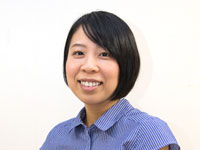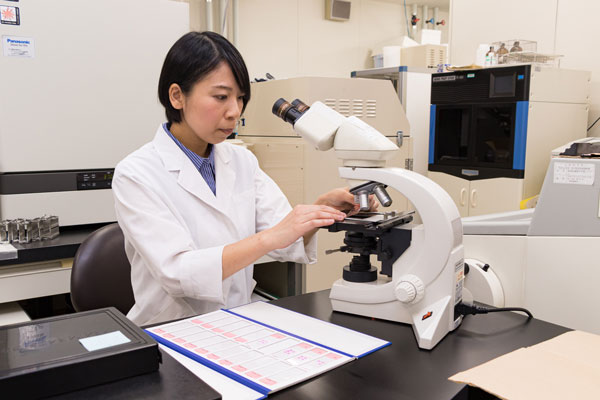Oct. 18, 2019
Crafting conversations on Alzheimer’s
Shoko Hashimoto, Special Postdoctoral Researcher

Laboratory for Proteolytic Neuroscience, RIKEN Center for Brain Science
Describe your role at RIKEN.
My group aims to elucidate the etiologic mechanisms (the source) of Alzheimer’s disease, the world’s most common form of dementia.
Describe your current research.
Of the neuropathological hallmarks of Alzheimer’s, senile plaque and neurofibrillary tangle are the best known and believed to be key to the disease’s progression. But senile plaque begins forming more than 10 years before symptoms begin. We believe there are changes within that 10 years that either greatly progress or suppress the development of symptoms, and we want to understand these changes better. I study ‘oxidative stress’ and ‘novel Alzheimer-related proteins’ in mouse models, which are linked to one of three main areas believed to cause the symptoms of Alzheimer’s.

How did you become interested in your current field of research?
The misfolding of proteins leads to an accumulation and aggregation of proteins in the brain, and these are linked to neurodegenerative diseases, including Alzheimer’s. I studied enzyme protein folding in graduate school and wanted to understand what triggers protein misfolding and how a misfolded protein kills neuronal cells.
When did you join RIKEN?
I joined RIKEN seven years ago, when my lab was recruiting researchers for a pharmaceutical company collaboration. Through that project, I learned to produce results within a predetermined period, to advance our research while keeping up communication with colleagues, about the difficulties of drug development, and many other things besides. In particular, I noticed that research isn’t just about experiments and writing papers, but also office work, communication, and so on.
Describe some of the technologies that you use
I use magnetic resonance imaging (MRI) on mice. MRI clearly shows brain shrinkage, and this has been important to the development of my publications. A cryo-electron microscope has also enabled us to observe molecules at atomic resolution, resolving the structure of pathogenic protein aggregates seen in brains with Alzheimer’s.
What’s the best thing about working at RIKEN?
The Special Postdoctoral Researcher program lets us perform independently planned research by giving us a budget and salary. The program helps foster responsibility and leadership in young scientists.
What has been your most memorable experience at RIKEN?
Two years ago, I gave a presentation at a Brain Lunch Seminar held by the RIKEN Brain Science Institute (BSI). Before the presentation, Charles Yokoyama, a research coordinator at the BSI, taught me how to tell a compelling story, make my English easier to understand and how to create slides with impact. Consequently, I felt confident presenting in English and the attendees had a lively discussion on the topics I presented. After this experience, I began to want to present my research and to be part of discussions at international conferences, and this has definitely helped me write better papers. I’m deeply thankful to Dr Yokoyama.
